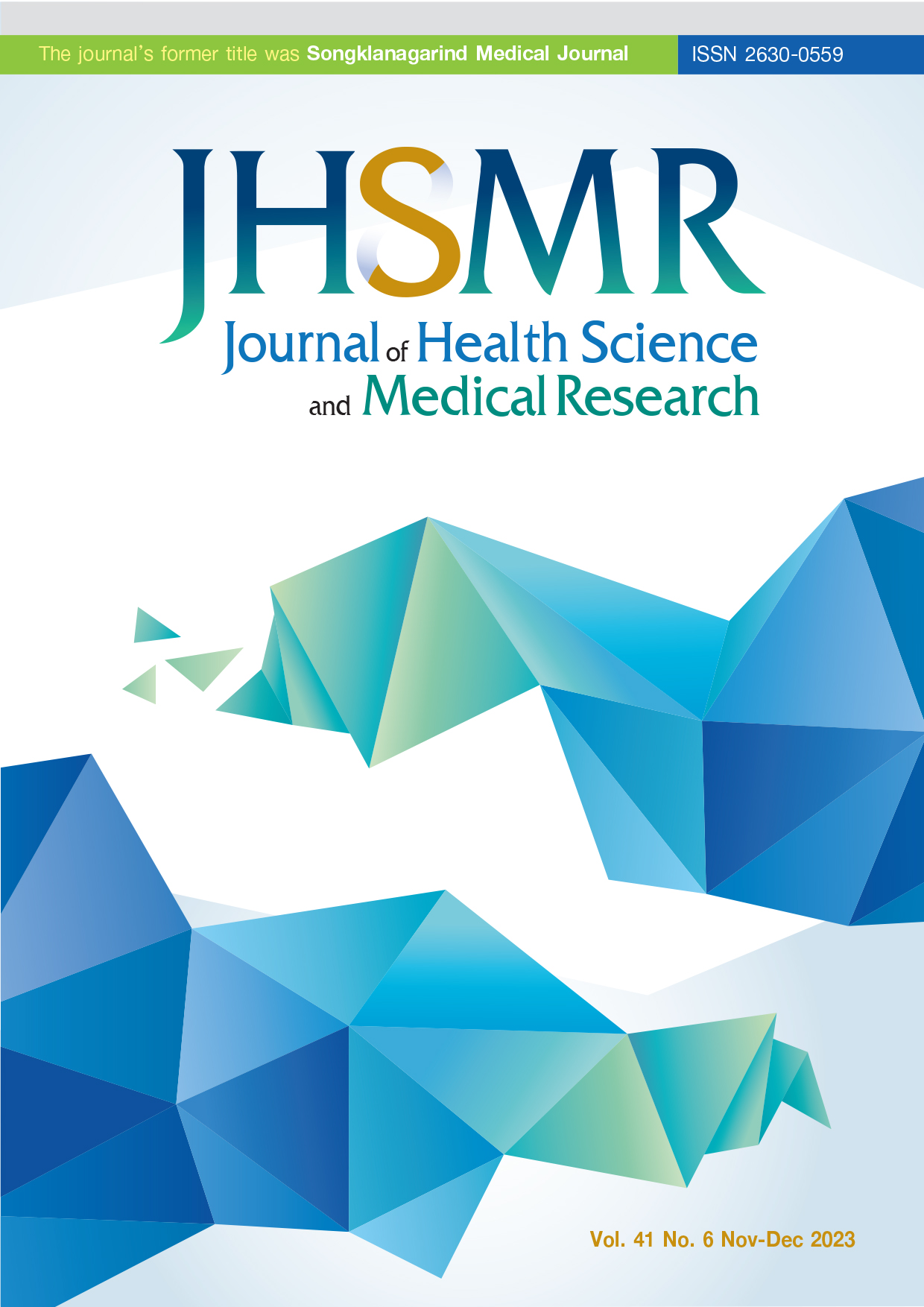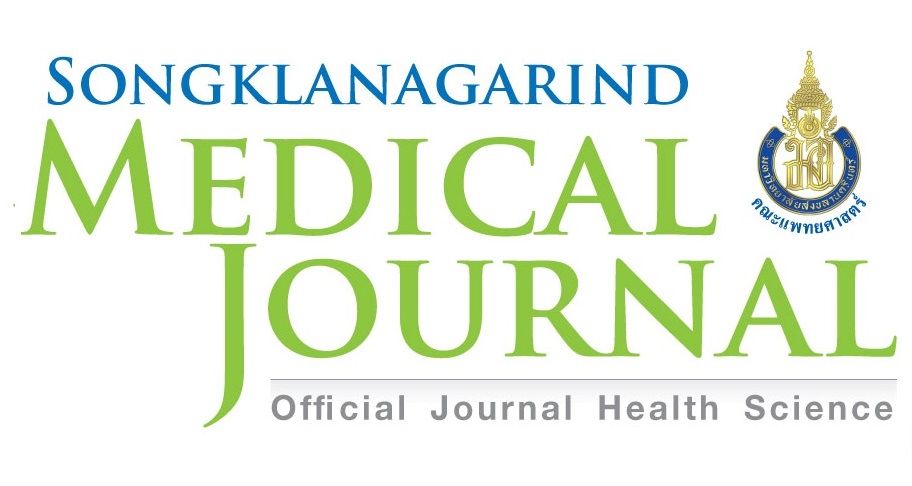Effects of Caffeine Mixed with Alpha Lipoic Acid in Preventing Streptozotocin-induced Diabetes in Rats: In Silico and In vivo Study
Keywords:
ALA, caffeine, diabetes, GPx-1, MDAAbstract
Objective: This study aimed to investigate the combined effects of caffeine and Alpha Lipoic Acid (ALA) on oxidative stress, due to chronic hyperglycemia, in a model of diabetic rats induced with streptozotocin (STZ) (in silico and in vivo approaches).
Material and Methods: This In silico study investigated the interaction between caffeine and ALA against insulin receptors and enzymes of Glutathione Peroksidase-1 (GPx-1), with molecular docking. Male, Wistar rats were included using a quasi-experimental research design, with post-test only and a control group (in vivo). This study measured the end result of a 6-week-induction on body weight, fasting blood glucose, Malondialdehyde (MDA) and GPx-1 enzyme from 25 rats.
Results: Molecular docking found the interactions of caffeine and GPx-1 consisting of an energy bond of 5,06 kcal/mol, hydrogen and hydrophobic bond. Additionally, it showed the interaction of ALA and GPx-1 containing an energy bond of -5.16 kcal/mol, hydrogen bonding and hydrophobicity. However, there were no significant difference in body weight, fasting blood glucose, MDA and GPx-1 levels of the ALA-caffeinated diabetic rats compared to diabetic rats.
Conclusion: Caffeine and ALA have the potential to activate GPx-1 enzymes (in silico study). However, the use of a caffeine and ALA combination resulted in no significant difference in fasting blood glucose and oxidative stress conditions when compared to diabetic rats without additional induction (in vivo study).
References
International Diabetes Federation. IDF Diabetes Atlas Update 10th edition [homepage on the Internet]. Amsterdam: International Diabetes Federation; 2021 [cited 2022 Oct 19]. Available from: https://diabetesatlas.org/idfawp/resource-files/2021/07/IDF_Atlas_10th_Edition_2021.pdf
World Health Organization. Diabetes [homepage on the Internet]. Switzerland: World Health Organization; 2022 [cited 2022 Oct 19]. Available from: https://www.who.int/health-topics/diabetes#tab=tab_1
Ozougwu O. The pathogenesis and pathophysiology of type 1 and type 2 diabetes mellitus. J Physiol Pathophysiol 2013;4:46-57.
Yan LJ. Pathogenesis of chronic hyperglycemia: from reductive stress to oxidative stress. J Diabetes Res 2014;2014:137919. doi: 10.1155/2014/137919.
Kawahito S, Kitahata H, Oshita S. Problems associated with glucose toxicity: role of hyperglycemia-induced oxidative stress. World J Gastroenterol 2009;15:4137–42.
Dudzinska E, Szymona K, Bogucki J, Koch W, Cholewinska E, Sitarz R, et al. Increased markers of oxidative stress and positive correlation low-grade inflammation with positive symptoms in the first episode of schizophrenia in drug-naïve patients. J Clin Med 2022;11:1–10.
Shawki HA, Elzehery R, Shahin M, Abo-Hashem EM, Youssef MM. Evaluation of some oxidative markers in diabetes and diabetic retinopathy. Diabetol Int 2021;12:108-17.
Banik S, Ghosh A. The association of oxidative stress biomarkers with type 2 diabetes mellitus: a systematic review and meta-analysis. Health Sci Rep. 2021;4:e389. doi: 10.1002/hsr2.389.
Kasapoglu M, Ozben T. Alterations of antioxidant enzymes and oxidative stress markers in aging. Exp Gerontol 2001;36:209–20.
Lewis P, Stefanovic N, Pete J, Calkin AC, Giunti S, Thallas-Bonke V, et al. Lack of the antioxidant enzyme glutathione peroxidase-1 accelerates atherosclerosis in diabetic apolipoprotein E-deficient mice. Circulation 2007;115:2178–87.
Papich MG, Streptozocin. In: Papich MG, editor. Saunders handbook of veterinary drugs. 4th ed. Missouri: Theime; 2016;p.742–3.
Qinna NA, Badwan AA. Impact of streptozotocin on altering normal glucose homeostasis during insulin testing in diabetic rats compared to normoglycemic rats. Drug Des Devel Ther 2015;9:2515–25.
Akbarzadeh A, Norouzian D, Mehrabi MR, Jamshidi S, Farhangi A, Verdi AA, et al. Induction of diabetes by streptozotocin in rats. Indian J Clin Biochem 2007;22:60–4. doi: 10.1007/BF02913315.
Wei M, Ong L, Smith MT, Ross FB, Hoey AJ, Burstow D, et al. The streptozotocin-diabetic rat as a model of the chronic complications of diabetes. Asia Pacific Hear J 2003;12:1–20.
Abunasef SK, Amin HA, Abdel-Hamid GA. A histological and immunohistochemical study of beta cells in streptozotocin diabetic rats treated with caffeine. Folia Histochem Cytobiol 2014;52:42–50.
Kagami K, Morita H, Onda K, Hirano T, Oka K. Protective effect of caffeine on streptozotocin-induced beta-cell damage in rats. J Pharm Pharmacol 2010;60:1161–5.
Devasagayam TP, Kamat JP, Mohan H, Kesavan PC. Caffeine as an antioxidant: inhibition of lipid peroxidation induced by reactive oxygen species. Biochim Biophys Acta 1996;1282:63-70.
Laher I. Diabetes and alpha lipoic acid. Front Pharmacol 2011;2:1-15. doi: 10.3389/fphar.2011.00069.
Ghelani H, Razmovski-Naumovski V, Nammi S. Chronic treatment of (R)-α-lipoic acid reduces blood glucose and lipid levels in high-fat diet and low-dose streptozotocin-induced metabolic syndrome and type 2 diabetes in Sprague-Dawley rats. Pharmacol Res Perspect 2017;5:1–12.
Maritim AC, Sanders RA, Watkins JB. Effects of α-lipoic acid on biomarkers of oxidative stress in streptozotocin-induced diabetic rats. J Nutr Biochem 2003;14:288–94.
McCusker RR, Goldberger BA, Cone EJ. Caffeine content of specialty coffees. J Anal Toxicol 2003;27:520–2.
Burkholder-Cooley N, Rajaram S, Haddad E, Fraser GE, Jaceldo-Siegl K. Comparison of polyphenol intakes according to distinct dietary patterns and food sources in the Adventist health study-2 cohort. Br J Nutr 2016;115:2162-9.
Usman U, Bakar A, Mohamed M. A review on experimental methods of diabetic research: advantages and limitations. Annu Res Rev Biol 2015;7:100-8.
Szkudelski T, Szkudelska K. Streptozotocin induces lipolysis in rat adipocytes in vitro. Physiol Res 2002;51:255-9.
Botion LM, Green A. Long-term regulation of lipolysis and hormone-sensitive lipase by insulin and glucose. Diabetes 1999;48:1691–7.
Naidoo P, Islam MS. Development of an alternative non-obese non-genetic rat model of type 2 diabetes using caffeine and streptozotocin. Pharmacol Rep 2014;66:585–93.
Barcelos RP, Souza MA, Amaral GP, Stefanello ST, Bresciani G, Fighera MR, et al. Caffeine supplementation modulates oxidative stress markers in the liver of trained rats. Life Sci 2014;96:40–5.
Valadão Vicente SJ, Ishimoto EY, Cruz RJ, Seabra Pereira CD, Torres EAFDS. Increase of the activity of phase II antioxidant enzymes in rats after a single dose of coffee. J Agric Food Chem 2011;59:10887–92.
National Center for Biotechnology Information. PubChem compound summary for CID 6106, Leucine. [homepage on the Internet]. Maryland: National Center for Biotechnology Information U.S. National Library of Medicine; 2022 [cited 2022 Oct 25]. Available from: https://pubchem.ncbi.nlm.nih.gov/compound/Leucine
Chen X, Xiang L, Jia G, Liu G, Zhao H, Huang Z. Effects of dietary leucine on antioxidant activity and expression of antioxidant and mitochondrial-related genes in longissimus dorsi muscle and liver of piglets. Anim Sci J 2019;90:990–8. doi: 10.1111/asj.13249
Wu G, Bazer FW, Burghardt RC, Johnson GA, Kim SW, Knabe DA, et al. Proline and hydroxyproline metabolism: implications for animal and human nutrition. Amino Acids 2011;40:1053–63.
Bhagavan NV, Ha CE. Protein and amino acid metabolism. In: Bhagavan NV, Ha CE, editors. Essentials of medical biochemistry with clinical cases. 2nd ed. San Diego: Academic Press: Thieme; 2015;p.227-68.
Martínez Y, Li X, Liu G, Bin P, Yan W, Más D, et al. The role of methionine on metabolism, oxidative stress, and diseases. Amino Acids 2017;49:2091–8.
Lehár J, Krueger AS, Avery W, Heilbut AM, Johansen LM, Price ER, et al. Synergistic drug combinations tend to improve therapeutically relevant selectivity. Nat Biotechnol 2009;27:659–66.
Tang Q, Tan P, Ma N, Ma X. Physiological functions of threonine in animals: beyond nutrition metabolism. Nutrients 2021;13:1-13. doi: 10.3390/nu13082592.
Wang W, Wu Z, Lin G, Hu S, Wang B, Dai Z, et al. Glycine stimulates protein synthesis and inhibits oxidative stress in pig small intestinal epithelial cells. J Nutr 2014;144:1540–8. doi: 10.3945/jn.114.194001.
Budin SB, Kee KP, Eng MYS, Osman K, Bakar MA, Mohamed J. Alpha lipoic Acid prevents pancreatic islet cells damage and dyslipidemia in streptozotocin-induced diabetic rats. Malays J Med Sci 2007;14:47–53.
Downloads
Published
How to Cite
Issue
Section
License

This work is licensed under a Creative Commons Attribution-NonCommercial-NoDerivatives 4.0 International License.




















